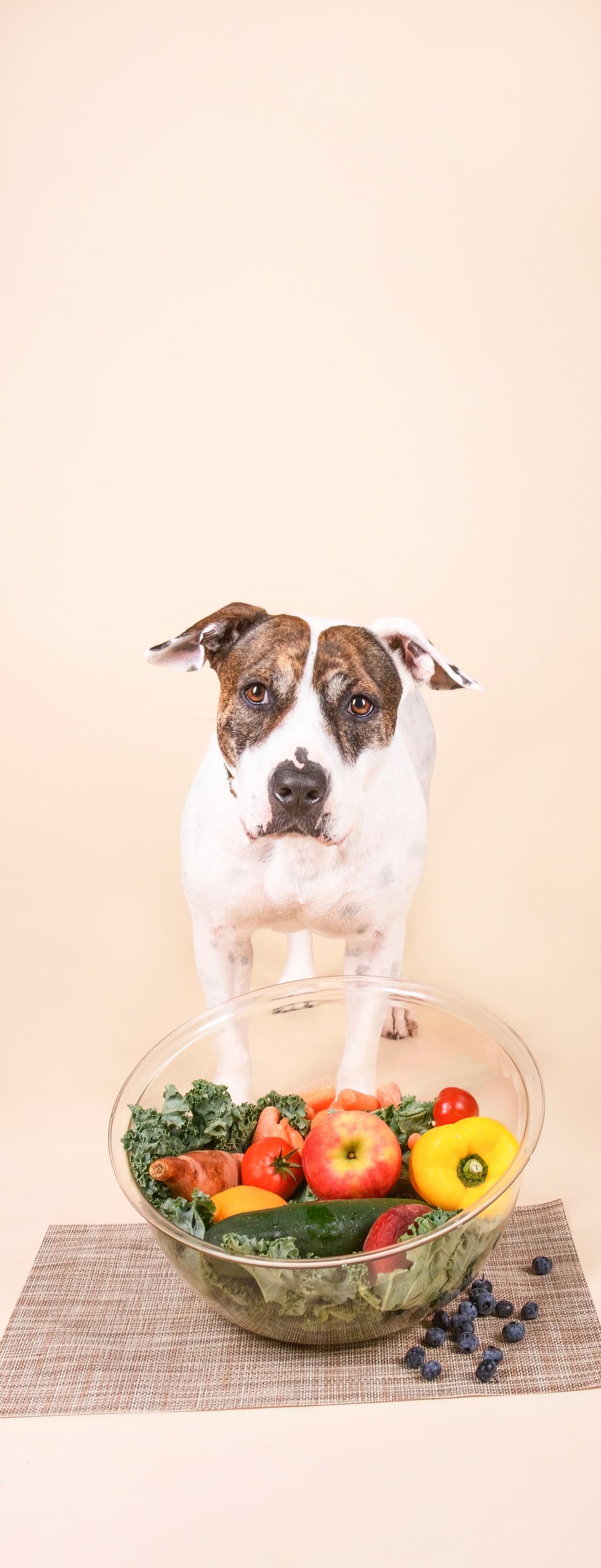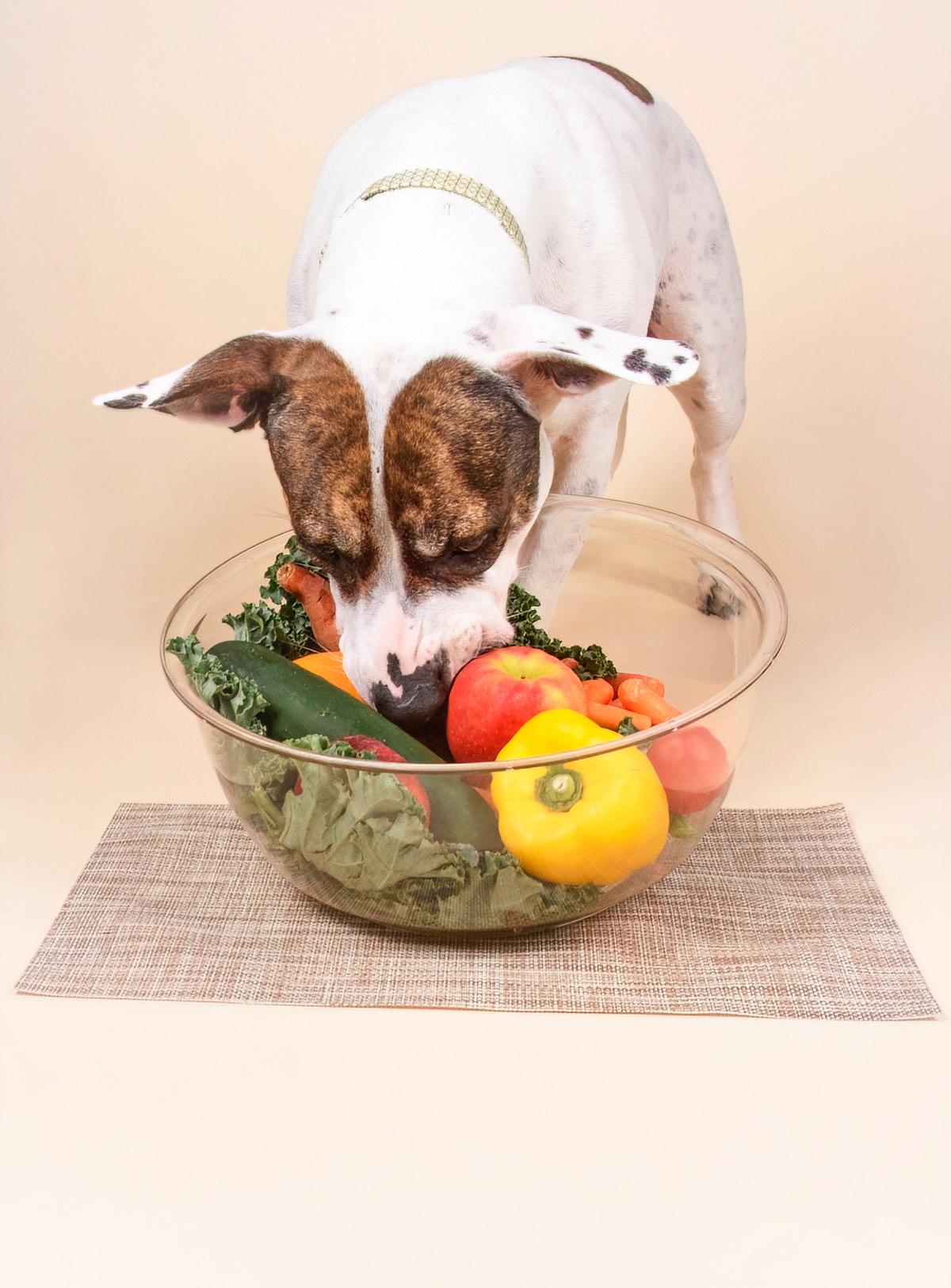
4 minute read
The Good, The Bad and The Ugly: What’s in your pet’s food dish?
WRITTEN & PHOTOS BY JEANNE TAYLOR, Staff Writer
When we know better, we do better.
Imagine a time when pets were more utilitarian – farm dogs, herding and working dogs, flock guardians, front porch fixtures – and less spoiled-pooch-in-a-purse riding shotgun with its human to local breweries, store aisles, and restaurant patios. Dogs roamed, often landing on their owner’s doorstep at night with the hope of some table scraps falling their way, or whatever grains or leftovers might be offered to them.
We have come so far in our treatment of animals (in most cases). While the first commercial dog biscuit came on the scene in the mid-1800s, by the early 1900s in the time following the Industrial Revolution, there had been a change in the way that ‘kept animals’ were considered. They became true pets and companions. So, when kibble cropped up in 1956, there was a massive shift in thinking, thanks to clever marketing touting convenience and balanced nutrition. Pet owners became consumers. Kibble was promoted as the be-all-end-all product for pets, with its extended shelf life, balanced nutrient panel, and easy storage. Now it’s a multi-billion-dollar industry and continuing to grow each year.
Well, if you have ever watched the documentary ‘Pet Fooled,’ you might feel differently about most kibble brands. For many years now, holistic, and even integrative veterinary providers have sought to better inform pet parents about feeding and nutrition options, bringing to light some terrible practices that exist in the commercial pet food industry. You can look at YouTube or any number of online resources to learn more about how kibble is made and the effects the process and the ingredients may have on your pet’s health. But that isn’t the purpose of this article.

Recognizing that consumers lean into the convenience and economic affordability of kibble, we aim here to offer ideas on ways to further incorporate foods that are good for our dogs - and steer you from those that are not. As for kibble, we encourage pet owners to talk with well-informed pet industry professionals to learn about the varied brands, their recall histories, and see what may be the best fit for their pets’ nutritional needs – and the human’s wallet.
There are plenty of other feeding options for our pets beyond kibble too – RAW, gently cooked, freeze dried – the list goes on and it can be overwhelming. But one thing most can agree on is that adding fruits and vegetables to your pet’s diet can have long-term positive impacts. Plus, you’ll rise to the rank of the preferred pet parent every time you place that crunchy carrot or cold, tasty blueberry in their bowl! ■
Good/Safe
Apples (remove core and seeds first)
Bananas (as a treat, not a meal staple)
Blueberries
Cantaloupe
Cranberries
Cucumbers
Mangoes (remove the pit first)
Oranges (peel first)
Peaches (remove the pit)
Pears (remove the pit and seeds)
Pineapple (remove crown and prickly skin)
Raspberries (in moderation)
Tomatoes (in moderation and from the ripe flesh only, never the plant)
Tomatoes (in moderation and from the ripe flesh only, never the plant)
Watermelon (remove rind and seeds)
Asparagus (no real benefit, but no harm)
Beets (in moderation)
Bell Peppers
Butternut Squash
Broccoli (in moderation)
Brussel sprouts
Cabbage
Carrots
Cauliflower
Celery
Eggplant (in moderation and no leaves or stem)
Green beans
Lettuce
Okra (in moderation)
Potatoes (in moderation)
Pumpkin
Spinach (in moderation)
Sweet Potatoes
Zucchini
Anchovies (in water)
Sardines (in water)
And more!
NOT Good/Avoid
Alcohol
Avocados (fresh) - although as an added ingredient, avocado offers benefits
Bread dough (raw)
Caffeine
Cherries (fresh) – just skip them and opt for treats that may include cherries as an ingredient
Chocolate
Cooked Bones
Grapes
Macadamia Nuts
Nutmeg
Raisins
Wild Mushrooms
Onions
Xylitol
And more!
Fruits and vegetables should be fresh or frozen, not seasoned, salted or pickled, and cut into appropriately-size pieces to avoid choking.
Many of the noted items can be used in moderation, and with the approval of your veterinarian, especially if your dog has any health concerns or sensitivities.
This article is not intended to be viewed as medical or veterinary advice, or specific to any one pet or condition. Please consult with your veterinarian before making changes to your pet’s diet.
This list is not fully inclusive. Please research any possible health implications prior to adding new items to your pet’s diet.



